Aviation | Resources | Newsletters | 2023-2

Newsletter Issue 2/2023 (December 2023)
Jump to:
- Foreword by the Chair of WMO Standing Committee on Services for Aviation
- The WMO family wishes Gaborekwe Khambule well for her impending retirement
- Reminder of the discontinuation of the Technical Regulations (WMO-No. 49), Volume II, Meteorological Service for International Air Navigation
- Updates of WMO publications in aeronautical meteorology service delivery and cost recovery
- Future skills of aeronautical meteorological personnel linked to service delivery transformation
- WMO input to ICAO Air Navigation World 2023
- Outcomes of the third meeting of the Standing Committee on Services for Aviation (SC-AVI-3)
- Outcomes of the second meeting of the Aviation Research and Development Project Phase 2 Scientific Steering Committee (AvRDP2-SSC-2)
- WMO input to the European Space Weather Week (ESWW 2023) and outcomes of the third meeting of the Expert Team on Space Weather (ET-SWx-3)
- Highlights of the second meeting of the Services Commission Management Group (SERCOM-MG-2)
- Highlights of the Aeronautical Meteorology Scientific Webinars 2023 and expectations for AeroMetSci-2024
- Expectations for the third session of the Services Commission (SERCOM-3) and a Gender Action Day
- Initiation of an ICAO/WMO Joint Aviation Forum in trial mode
- News from the ICAO Secretariat
- News from the WMO Secretariat
- Upcoming WMO meetings and events
- Coming up next time
Foreword by the Chair of WMO Standing Committee on Services for Aviation
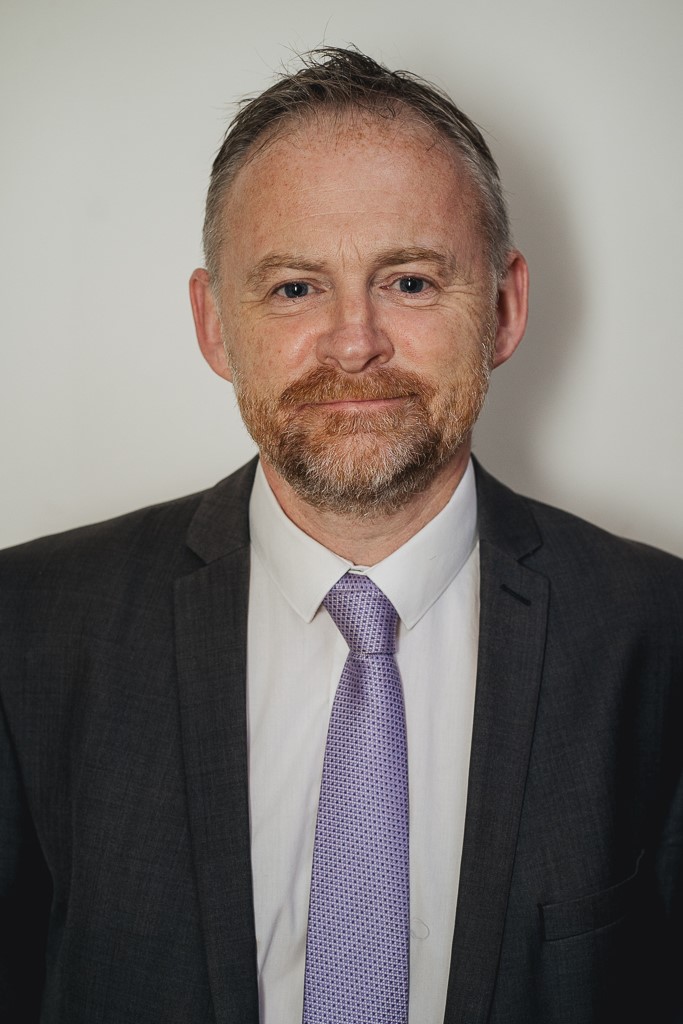 Hi Friends and welcome to the second SC-AVI newsletter of 2023 and my final newsletter as your Chair.
Hi Friends and welcome to the second SC-AVI newsletter of 2023 and my final newsletter as your Chair.
I joined the WMO Aviation family back in 2003 as a very ‘green’ Chair of the Expert Team on Education and Training within the Commission for Aeronautical Meteorology (CAeM) and, between then and now, have served 8-years as vice-president of CAeM, been the last president of CAeM and the first Chair (post-WMO reform) of SC-AVI. I’m really proud of what our community has achieved in that time, none of which would have been possible were it not for the commitment and contributions of our diverse pool of experts from all over the world, the support of multiple generations of Secretariat staff and, of course, the very special relationship we have with the International Civil Aviation Organization (ICAO).
This edition of the newsletter very much encompasses the scope of the work we’ve undertaken over the last 20-years but also nicely sets the scene for the trajectory the SC-AVI is going to be taking over at least the next decade in terms of science applications, staff skills and supporting regulatory frameworks and guidance materials, including the development of a significantly updated WMO Long-term Plan for Aeronautical Meteorology (access and download the current 2019 edition here).
I formally stand down as Chair of SC-AVI at the third session of the Services Commission (SERCOM-3) in Bali, Indonesia in March - read more about SERCOM-3 expectations in the article below - and I very much hope that many of you will be able to join us there. I’ll still be heavily involved in WMO in the coming years, so this is just ‘over-and-out’ for this particular bit of my journey. It’s been a great ride, not without a bit of turbulence and a few spilt drinks along the way, but now it’s time for a fresh crew to take the joystick and take you to the next adventure…
Bon voyage!
Ian
Ian Lisk
Met Office, United Kingdom
Chair of WMO Standing Committee on Services for Aviation (SC-AVI)
The WMO family wishes Gaborekwe Khambule well for her impending retirement
Submitted by Greg Brock, WMO Secretariat
In September 2023, at the conclusion of the third meeting of the Standing Committee on Services for Aviation (SC-AVI-3), the Standing Committee wished Ms Gaborekwe Khambule well for her impending retirement from the South African Weather Service and acknowledged her significant contribution to the work of WMO specifically and the aeronautical meteorology community more generally over many years. Gabo has been involved in the work of WMO for the past two decades, through the former Commission for Aeronautical Meteorology (CAeM) and, more recently, the Standing Committee on Services for Aviation (SC-AVI), in which she has served as a co-vice-chair since 2020. Gabo has also contributed to the work of ICAO for many years, both at the regional and global level.
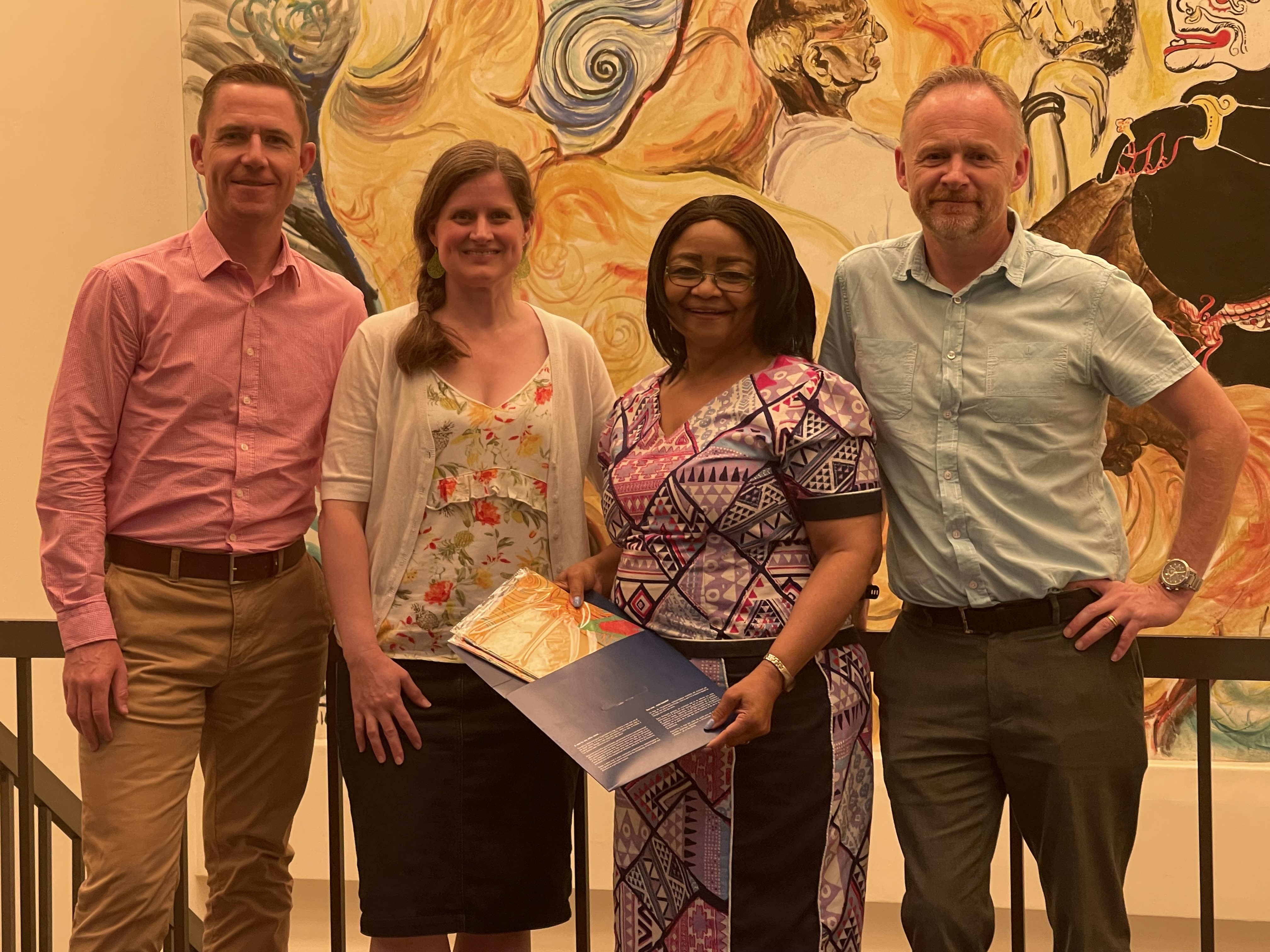
In October/November 2023, while attending the second meeting of the Services Commissions Management Group (SERCOM-MG-2) and in the presence of the presiding chair and other co-vice-chair of SC-AVI, Gabo was presented with a retirement gift and card by the WMO Secretariat.
If you would like to read more about Gabo's career path, including her leadership roles at the national and international level, please read this article here. This insightful article, published in 2020, also includes profiles of other women in leadership roles within the aeronautical meteorology community.
Reminder of the discontinuation of the Technical Regulations (WMO-No. 49), Volume II, Meteorological Service for International Air Navigation
Submitted by Greg Brock, WMO Secretariat
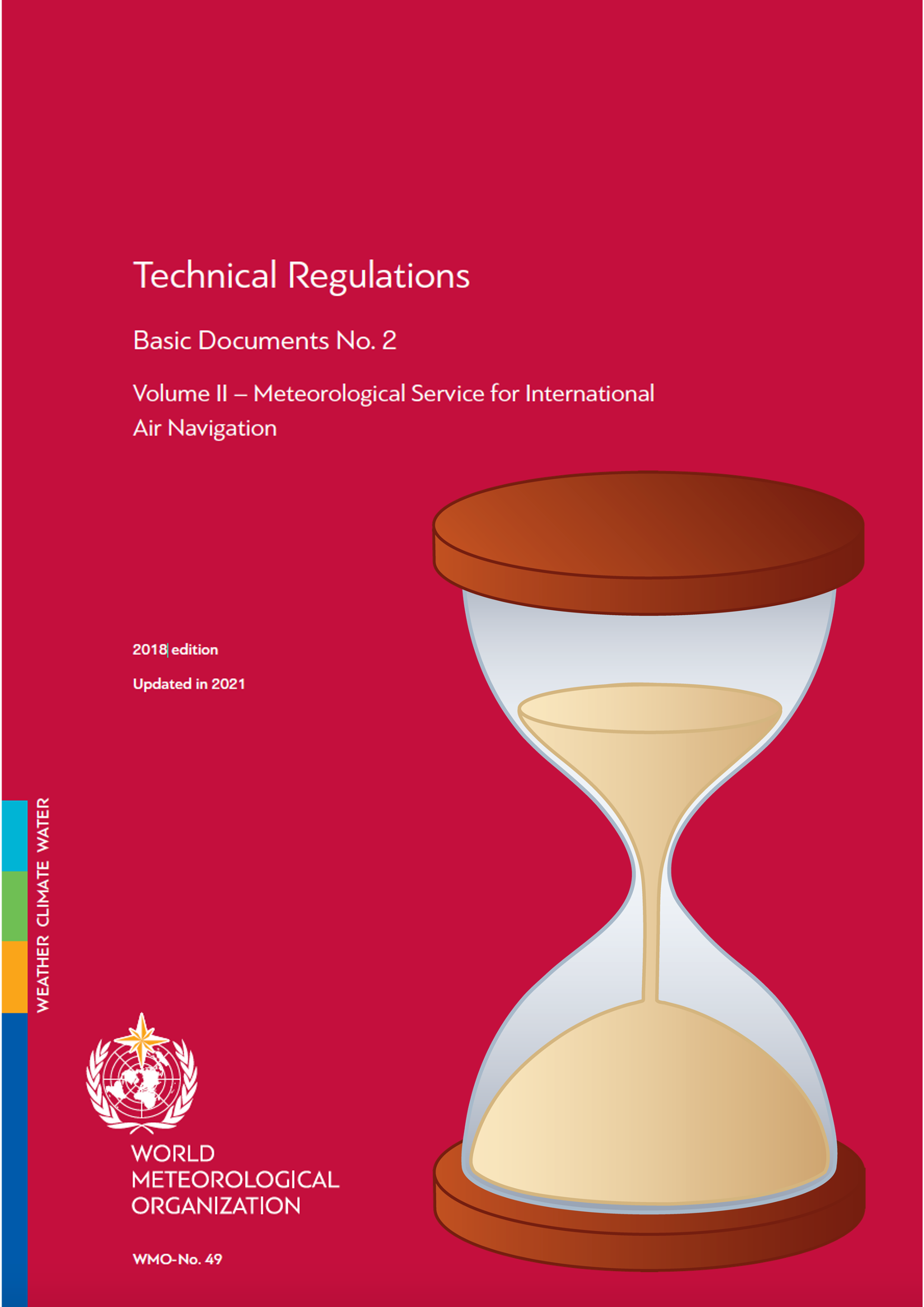 As mentioned in previous Services for Aviation newsletters and via the news items on the Services for Aviation homepage, WMO is preparing for the discontinuation of the Technical Regulations (WMO-No. 49), Volume II, Meteorological Service for International Air Navigation.
As mentioned in previous Services for Aviation newsletters and via the news items on the Services for Aviation homepage, WMO is preparing for the discontinuation of the Technical Regulations (WMO-No. 49), Volume II, Meteorological Service for International Air Navigation.
In May/June 2023, through Resolution 12 (Cg-19), the nineteenth World Meteorological Congress endorsed a plan of action for the discontinuation of WMO-No. 49, Volume II. This plan of action will see the WMO-No. 49, Volume II discontinued in two stages as follows:
- Part I, International Standards and Recommended Practices: Core Standards and Recommended Practices and Part II, International Standards and Recommended Practices: Appendices and Attachments of WMO-No. 49, Volume II shall be discontinued with effect 31 December 2023.
- Part III, Aeronautical Climatology and Part IV, Format and Preparation of Flight Documentation of WMO-No. 49, Volume II shall be discontinued upon the incorporation of material of continuing relevance into the Procedures for Air Navigation Services — Meteorology (PANS-MET) (Doc 10157) of the International Civil Aviation Organization (ICAO), preferably as part of Amendment 1 to PANS-MET (provisionally 2026).
In September 2023, the office of the Secretary-General issued a Circular letter to Permanent Representatives of Members with WMO reminding them of Resolution 12 (Cg 19) and urging them to gain free, online access to Annex 3 to the Convention on International Civil Aviation, Meteorological Service for International Air Navigation and, when available, the PANS-MET (Doc 10157) via the electronic library kindly hosted by ICAO or by other appropriate means.
The Circular letter is available in all official WMO languages via the following links: English | French | Spanish | Russian | Chinese | Arabic
A comprehensive online communications package on the discontinuation of WMO-No. 49, Volume II is available here. The communication package covers the background, latest developments and next steps on this issue as well as the detailed plan of action and a downloadable information sheet and list of frequently asked questions. For further assistance, please contact the WMO Secretariat (aviation@wmo.int).
Updates of WMO publications in aeronautical meteorology service delivery and cost recovery
Submitted by Greg Brock, WMO Secretariat
In February/March 2023, through Resolution 7 (EC-76) and Resolution 8 (EC-76), the seventy-sixth session of the Executive Council approved the publication of major updates to the Guide to Practices for Meteorological Officers Service Aviation (WMO-No. 732) (to be re-titled as the Guide to Services for Aviation) and the Guide to Aeronautical Meteorological Services Cost Recovery: Principles and Guidelines (WMO-No. 904).
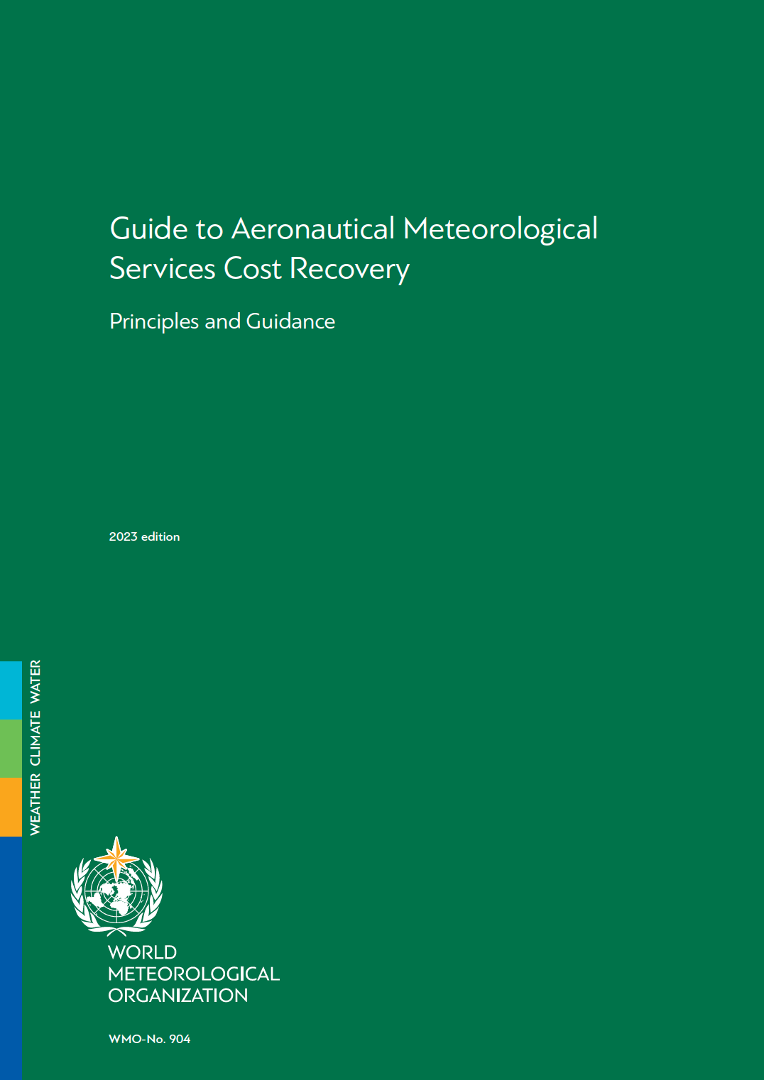
A new edition of WMO-No. 904 was published on 12 December 2023, initially in English but with several other official WMO languages to follow.
A new edition of WMO-No. 732 is, at time of writing, subject to final editing, proofing and translation prior to publication. This publication is expected to be available on the WMO e-Library in early 2024 in English and several other official WMO languages.
Future skills of aeronautical meteorological personnel linked to service delivery transformation
Submitted by Kathy-Ann Caesar and Karine Dumas, Co-Chairs of the SC-AVI Expert Team on Education, Training and Competency (ET-ETC)
The future of aeronautical meteorology personnel (AMP) is going to be dominated by growth in technology, the expansion of specialisms in the operational space, climate change, and the maintenance of competencies. It is obvious where the future skills need to be focused, as the innovations being introduced in aeronautical meteorological services, starting with the onset of ‘big data’ with more sophisticated observations and dissemination systems, increased meteorological satellite data, and numerous numerical weather prediction (NWP) models, AMPs will need to multilayered in their operations.
The WMO has adopted the Basic Instruction Package for Meteorologists (BIP-M) as the qualification requirement for aeronautical meteorological forecasters (AMF). While not a requirement for Aeronautical Meteorological Observers (AMO), the Basic Instruction Package for Meteorological Technicians (BIP-MT) eases the progress to becoming an AMF. Note, both AMFs and AMOs must satisfy the competency requirements as laid out in the Compendium of WMO Competency Frameworks (WMO-No. 1209). Note, WMO-No. 1209 can be used in conjunction with the Guide to Competency (WMO-No. 1205).
The current basic skills defined by BIP-MT for an AMO are: Performing meteorological observations; Cloud and precipitation type identification for aviation; and Aviation coding, with Basic information and communication technology (ICT) network maintenance as optional.
The increased utilization of automatic weather stations (AWSs) for making weather observations will lead to ICT being mandatory. AWSs provide reliable weather data in remote, or hazardous locations, and can alert authorities in case of severe weather events. The data is instantaneously transmitted to forecasters and integrated into NWP models. Currently, the WMO Global Basic Observing Network (GBON) transmits observations largely from AWSs and automatically codes in BUFR or IWXXM, with little human intervention. The AMO will need to have a dedicated role in the maintenance of these networks and, hence, need ICT to be mandatory.
At the AMF level, continuously forecasters need to be engaged in changing technology. AMFs spend much of their operational hours reviewing layers of data, including real-time meteorological observations, satellite data and radar data, and integrating these into NWP model outputs, which in turn display the forecasts. Forecasters utilize synthetic analysis charts, which allow the data to be layered and displayed. The human element remains necessary in the decision-making process. AMF will have to rely heavily on their fundamental knowledge to develop and maintain skills in forecasting.
The advent of artificial intelligence (AI) is a driving-force in the future of digital aviation. AI poses a serious challenge to weather forecasters and tremendous strides have been made. A recent Financial Times article (London, United Kingdom, 14 November 2023) illustrates that "AI outperforms conventional weather forecasting methods for first time" and cites recent forecasting comparisons, which noted that the Google AI programme GraphCast outperformed the ECWMF model. The use of AI will grow, as the amount of data expands. It must be emphasized that AI operates in the realm of available data to it and its reliance will need to be measured.
The role of AMF has also become more complex, as specialisms such as volcanic ash, space weather, and tropical cyclone monitoring and forecasting are added to AMP operations. Already, adaptions for the specialisms have ignited amendments to AMP qualifications and competencies in the WMO Technical Regulations (WMO-No. 49), Volume I and WMO-No. 1209 referenced above.
Climate change cannot be ignored. Models and AI outputs are based on past data and normal outputs. Climate change will interject climatological extremes into the operational arena that will need to be addressed. AMO and AMF alike will need to maintain the standards of operation that allow these events to be properly recorded.
What does the future skills of the AMP look like? A more technologically trained and multifaceted staff but also one that possesses a necessary level of background skills, knowledge, and competencies to deliver services that enable safe, efficient, economic, and environmentally responsible aviation operations.
WMO input to ICAO Air Navigation World 2023
Submitted by Stéphanie Wigniolle, WMO Secretariat
The International Civil Aviation Organization (ICAO) organized an inaugural Air Navigation World 2023 event with a theme of “Shaping the Skies of Tomorrow: Addressing Key Issues and Technologies in Air Navigation and Safety” at ICAO headquarters in Montreal, Canada from 28 to 31 August 2023. AN World 2023 sought to obtain aviation stakeholder insights for enhancing aviation’s innovation and resilience approach while augmenting synergies between efficiency and safety. The aviation industry is rebuilding following the COVID-19 pandemic with expectations of resumed year-on-year growth across a dynamic range of aviation activities. Meteorology is a key component for enabling this expected growth and ensuring efficiency and safety of aviation. The AN World programme consisted of thirty sessions spread over 3.5 days, including two 90-minute sessions on meteorology (MET) in which WMO actively participated.

WMO (Services for Aviation Division) delivered a presentation and participated in a panel discussion. This was an opportunity to showcase WMO’s work in aeronautical meteorology, including aviation hazards such as convection and related initiatives, programmes or projects such as Phase 2 of the Aviation Research and Development Project (AvRDP2) – a joint collaboration between the Research Board and Services Commission. The presentation raised a good number of questions during the panel discussion as well as during lunch and coffee breaks, a sign of continued interest in meteorology and its intrinsic link with aviation safety, efficiency, economy and environmental protection.
The AN World 2023 participants, which numbered more than 600, shared their thoughts and expertise to create strategies aimed at advancing the industry. In line with ICAO's commitment to innovation and resilience, the conference resulted in a call to action that laid down clear and actionable strategies to achieve long-term aspirational goals, the major one being the “net-zero emissions in international aviation by 2050”, that discussed modern approaches to enhance air navigation safety including in the context of a changing climate and that deliberated on the future of air navigation systems and processes.
Outcomes of the third meeting of the Standing Committee on Services for Aviation (SC-AVI-3)
Submitted by Greg Brock, WMO Secretariat
In mid-September 2023, the Standing Committee on Services for Aviation convened its third meeting (SC-AVI-3) at the headquarters of the Met Office in Exeter, United Kingdom. During the meeting, the Standing Committee received a report from the Chair of SC-AVI as well as progress reports from the SC-AVI subsidiary bodies and thematic coordinators. The Standing Committee also considered matters relating to the WMO Technical Regulations and guidance material, coordination and collaboration with aviation stakeholders including the International Civil Aviation Organization (ICAO), and risk management within and organizational structures of SC-AVI. Furthermore, the Standing Committee reviewed its expected inputs to the third session of the Services Commission (SERCOM-3) to be convened in Bali, Indonesia in March 2024 as well as the SC-AVI subsidiary body meetings, events and conference calls to be convened over the next one to two years.
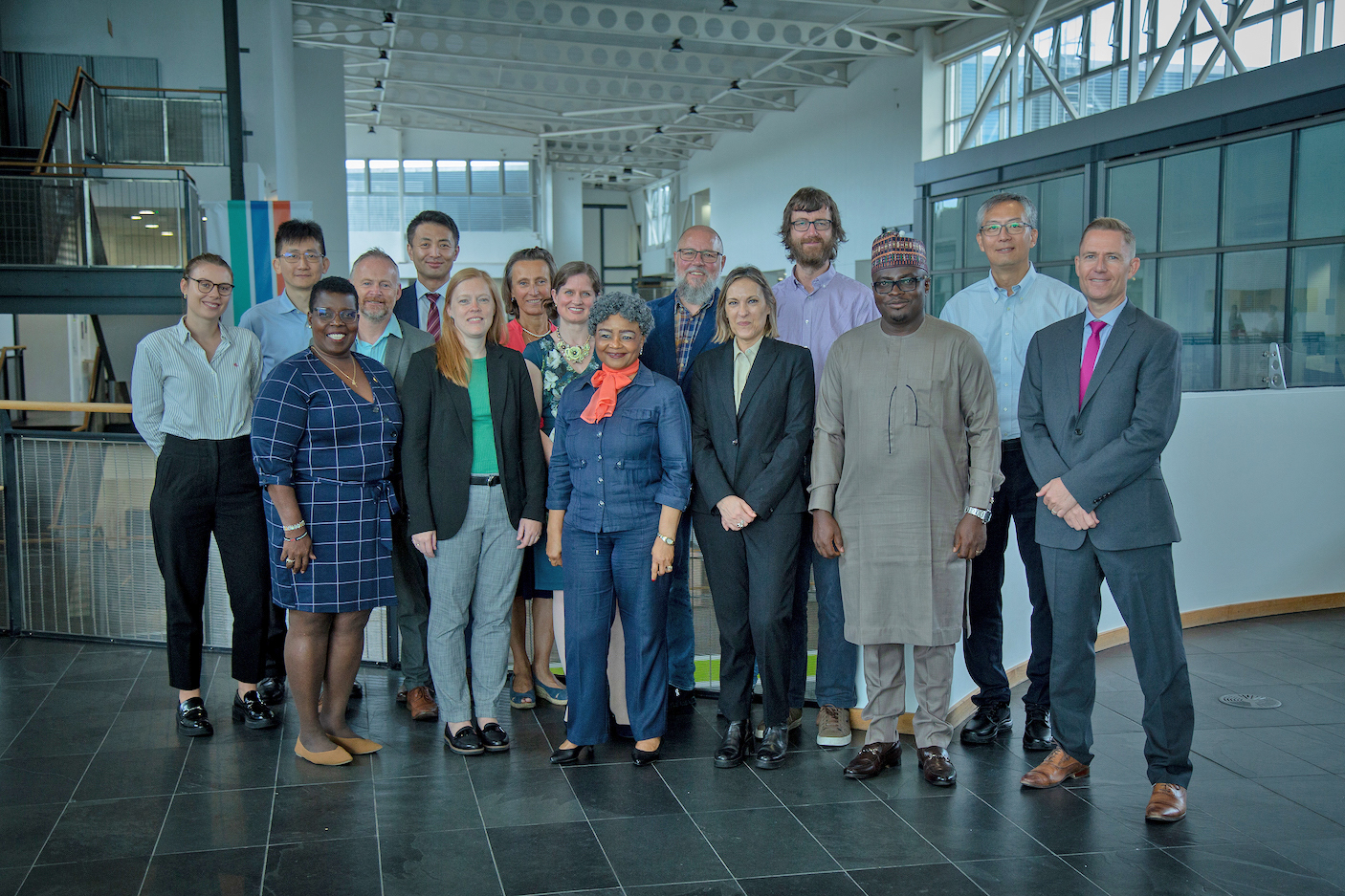
A total of eight (8) actions, six (6) decisions and three (3) recommendations were formulated during SC-AVI-3. The actions and decisions are internal to SC-AVI while the recommendations will be submitted to SERCOM-3 for consideration. Participants gave SC-AVI-3 a satisfaction rating of 4.9 out of 5.
Follow these links to access information on the outcomes of SC-AVI-3: Homepage | Final Report | Executive Summary | Satisfaction Survey Results
The next in-person meeting of the Standing Committee, namely SC-AVI-4, is tentatively scheduled for September 2025 at WMO headquarters in Geneva, Switzerland.
To learn more about what SC-AVI does and who's involved, please click here.
Outcomes of the second meeting of the Aviation Research and Development Project Phase 2 Scientific Steering Committee (AvRDP2-SSC-2)
Submitted by Stéphanie Wigniolle, WMO Secretariat, in coordination with Chris Davis and Piers Buchanan, Co-Chairs of the Aviation Research and Development Project Phase 2 Scientific Steering Committee (AvRDP2-SSC)
AvRDP2 is the second phase (2021-2025) of an Aviation Research and Development Project, a project of the World Weather Research Programme (WWRP), led by the WMO Research Board (RB) with the SERCOM SC-AVI as a close partner linking WMO with ICAO and other aviation stakeholders. AvRDP2 focuses on scientific advancement and capacity development in observation, forecasting, and warning of significant convection and associated hazards. It aims at demonstrating benefits of a gate-to-gate use of this advanced aeronautical meteorological information in the aviation operations environment. More information about the project can be found here.

In September 2023, the Scientific Steering Committee (SSC), the steering body of the project, held its second in-person meeting (AvRDP2-SSC-2), which was kindly hosted by United States of America at the National Centre for Atmospheric Research (NCAR) at its premises in Boulder, Colorado. The SSC reviewed the work progress over the two air routes selected for the project purposes, one long-haul flight (London Heathrow to Johannesburg), one short haul flight (Hong Kong to Singapore) and in the two agreed areas of investigation: a nowcasting capability for the tactical phase of flight (in-flight planning or re-routing) and an NWP probabilistic information for flight planning. Experts considered the experiments/trials of these innovative applications and enhanced products that were developed for the project such as, for example, a seamless suite of blended forecasts of convection and impact-based outputs, or a cloud top probabilistic forecast product. These trials will be conducted in 2024 and 2025. With the support of some user representatives who we able to join the meeting remotely, SSC members also discussed how to involve aviation users in these experiments, and more specifically, in the verification and validation phase of these new applications and products.
A work progress status of the study conducted by the Hong Kong University of Science and Technology (HKUST) in collaboration with the Hong Kong Observatory, on convection-induced turbulence (CIT) was also provided to the SSC meeting. Whereas Stage 1 of the study has been completed in 2022, HKUST has been progressing through Stage 2 and running some experiments with the newly built 30-member ensemble system over several CIT cases. HKUST colleagues are working on a weighting/selection methodology in order to identify the most reliable ensemble member in simulating CIT.
Further updates on the progress of the AvRDP2 project will appear in future newsletters, available via this link.
WMO input to the European Space Weather Week (ESWW 2023) and outcomes of the third meeting of the Expert Team on Space Weather (ET-SWx-3)
Submitted by Stéphanie Wigniolle and Jesse Andries, WMO Secretariat
The ESWW is an international meeting organized annually within the European region in collaboration with prominent members of the European space weather and space climate community. It began as a forum for the European space weather community and has since grown into an international event with global attendance. ESWW aims at bringing together the diverse groups in Europe and elsewhere working on different aspects of space weather and space climate, such as scientists, engineers, satellite operators, power grid technicians, communication and navigation specialists, people working in aviation, space weather service providers, space and ground-based telecoms and navigation services providers, and science, technology, engineering, mathematics (STEM) practitioners. More information on ESWW20223 is available here.

This year’s edition took place in the French city of space, namely Toulouse, from 20 to 24 November 2023. The ESWW2023 programme included a session dedicated to the space weather information service to aviation. As an opening talk, WMO (Services for Aviation Division) delivered a presentation on the establishment, by ICAO in coordination with WMO, of a global space weather information service, and then participated in a panel discussion. After the audience was reminded about the history of the development and implementation of this service, the presentation also addressed areas of improvement aiming at better responding to aviation user needs. The panel discussion further explored these areas of improvement and considered how to raise the awareness of the aviation community and the need to prepare for space weather events that can affect aviation communication and navigation performance.
As a contribution to a topical discussion meeting about the funding for space weather activities, WMO (Space Systems and Utilization Division) also provided a presentation explaining its role in facilitating international agreements on the development and maintenance of sustained observing systems (WIGOS).
Preceding ESWW2023, a third meeting of the WMO Expert Team on Space Weather (ET-SWx-3) convened on 15 and 16 November 2023 in Geneva, Switzerland. Among various activities, ET-SWx is gathering training material for space weather forecasters as used across various centres, with the aim of developing a corresponding competency framework. This activity will be coordinated with the SC-AVI Expert Team on Training and Competencies (ET-ETC), which is also studying competency frameworks in respect of the provision of volcanic ash and tropical cyclone information and services for aviation.
Highlights of the second meeting of the Services Commission Management Group (SERCOM-MG-2)
Submitted by Greg Brock, WMO Secretariat

In late-October/early-November 2023, the Services Commission Management Group convened its second meeting (SERCOM-MG-2) at the University of Hawaii-Manoa Campus in Honolulu, United States of America.
During the meeting the SERCOM-MG received a report from the president of SERCOM, discussed strategic and governance matters (including proposed structures and composition for 2024 to 2027), considered decisions to be made during the aforementioned SERCOM-3 session (including as these pertain to the outcomes of SC-AVI-3), and considered collaboration with other WMO constituent and non-constituent bodies (including the Infrastructure Commission, the Research Board and the Regional Associations).
The SERCOM-MG also considered its priorities for 2024 to 2027, including as these relate to gender equality and the empowerment of women in the services/applications area and the action plans, timelines and milestones associated with the United Nations Early Warnings for All initiative, which WMO is spearheading. Furthermore, the SERCOM-MG reviewed a proposed work plan for the SERCOM-3 session and an accompanying one-day Gender Action Day.
Highlights of the Aeronautical Meteorology Scientific Webinars 2023 and expectations for AeroMetSci-2024
Submitted by Stéphanie Wigniolle, WMO Secretariat, in coordination with Piers Buchanan and Ping Cheung, Co-Chairs of the SC-AVI Expert Team on Weather and Climate Science for Aviation Applications (ET-WCS)
In order to maintain community interest and engagement in the time interval between the Aeronautical Meteorology Scientific Conference (AeroMetSci-2017) that was convened in 2017 by WMO, Météo-France and other co-sponsors, and the next AeroMetSci Conference provisionally planned in October 2024, the Standing Committee on Services for Aviation (SC-AVI) has conducted a series of web-based seminars (‘webinars’) - the first in June 2022 and the second in December 2023 - to showcase some of the latest state-of-the-art scientific and technological advances taking place in aeronautical meteorology, with a particular focus on key meteorological hazards of concern to aviation.
The SC-AVI, through its Expert Team on Weather and Climate Science for Aviation Applications (ET-WCS) and others as necessary, was responsible for leading the planning, preparation and delivery of the 2023 edition of these webinars and for reporting on the outcomes to the Services Commission (SERCOM) and others concerned. The 2023 webinars attracted nearly 300 participants from around the world.

The theme of the 2023 webinars was:
“Scientific and technological innovation in observation and forecast of turbulence and airframe icing to enable service delivery transformation and improve aviation safety.”
Similar to the June 2022 webinars, the December 2023 webinars were conducted across multiple WMO regions, through three sessions (multiple time zones), each consisting of two hours of pre-recorded presentations and a one-hour live panel discussion, involving renowned experts and agencies from across the aeronautical meteorology community, and international aviation organizations/associations and others from the international aviation industry.
Presentations addressed the challenge that detection and forecasting of turbulence and airframe icing and their impact on aviation have presented for decades. One of the most dominant challenges in this domain, that the presentations highlighted, was the lack of observational data and the uneven spread of observational data around the globe. For instance, while observations of en-route turbulence are readily available over North America, say, in other areas there is no observation; or, where there is, it is not made openly accessible. This concern was also raised during the live panel discussions. The 2023 webinars considered several types of turbulence, including clear-air turbulence, convection-induced turbulence, mountain waves and also low-level wind shear and associated turbulence. It was also the opportunity to learn more about the various turbulence nowcast and forecast indices under development or used in operations, as well as on emerging probabilistic forecast capabilities, around the world. Some speakers provided explanations on how the usage of artificial intelligence (AI) techniques could assist in improving turbulence forecast products.
Each session programme included a couple of presentations about airframe icing detection and forecast research and development initiatives, which aim at enhancing the existing capabilities.
Each session programme also included at least one presentation about how turbulence may evolve in a changing climate. It was acknowledged, however, that not enough research which would indicate how icing may evolve due to global warming has been conducted so far. Finally, a user's perspective was conveyed through a presentation by a meteorologist at a US-based airline on how forecast turbulence or icing conditions impact the airline’s flight planning process.
>>>CLICK HERE to access the 2023 webinars resource materials<<<
The output of the 2023 webinars will include an overview of the presentations and a summary of the key points from the panel discussions. This summary and an equivalent summary of the 2022 webinars will serve in the preparation for a physical (in-person) AeroMetSci Conference later in 2024.
Emerging detection and forecast capabilities, including for probabilistic forecast of convection, turbulence and airframe icing would still be considered by the conference since these remain major topics of interest. The conference would also look at the added-value of AI and machine-learning techniques. Finally, considering the growing interest on climate change and its effects on aviation operations, it is expected the conference programme will include a session on this topic.
These 2022 and 2023 webinars and the foreseen 2024 in-person conference will help inform WMO’s advice to ICAO, for example, in respect of the hazardous weather information service (HWIS) concept and industry efforts to mitigate the effects of and adapt to a changing climate.
Expectations for the third session of the Services Commission (SERCOM-3) and a Gender Action Day
Submitted by Greg Brock, WMO Secretariat
The third session of the Commission for Weather, Climate, Hydrological, Marine and Related Environmental Services and Applications (SERCOM-3) will be held in Bali, Indonesia from 4 to 9 March 2024. The session will include a one-day Gender Action Day on 7 March 2024, the day immediately prior to International Women’s Day.
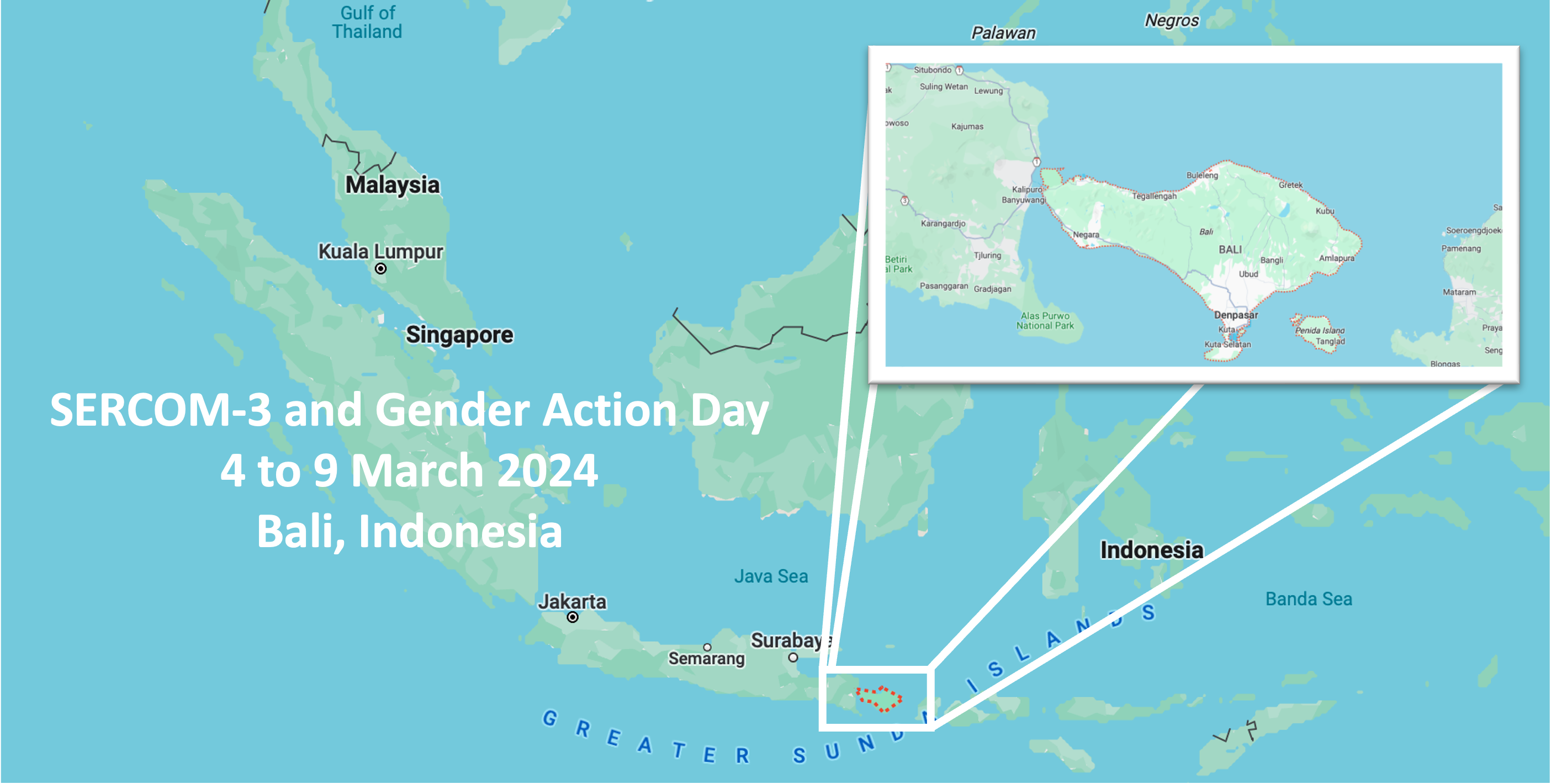 During the SERCOM-3 Plenary sessions, the Commission is expected to address, inter alia, a report by the president of the Commission, reports by the chairs of SERCOM subsidiary bodies (including the Standing Committee on Services for Aviation, SC-AVI), proposals developed by SERCOM subsidiary bodies for the amendment/update of WMO technical regulations and guidance, strategic planning of relevance to the Commission, a report by the SERCOM Gender Focal Point on gender equality within the Commission, the SERCOM work programme and the Commission's subsidiary body structures and leadership for the next intersession period. Also, the Commission will elect a president and up to three vice-presidents to serve the next four-year term.
During the SERCOM-3 Plenary sessions, the Commission is expected to address, inter alia, a report by the president of the Commission, reports by the chairs of SERCOM subsidiary bodies (including the Standing Committee on Services for Aviation, SC-AVI), proposals developed by SERCOM subsidiary bodies for the amendment/update of WMO technical regulations and guidance, strategic planning of relevance to the Commission, a report by the SERCOM Gender Focal Point on gender equality within the Commission, the SERCOM work programme and the Commission's subsidiary body structures and leadership for the next intersession period. Also, the Commission will elect a president and up to three vice-presidents to serve the next four-year term.
Initiation of an ICAO/WMO Joint Aviation Forum in trial mode
Submitted by Greg Brock, WMO Secretariat
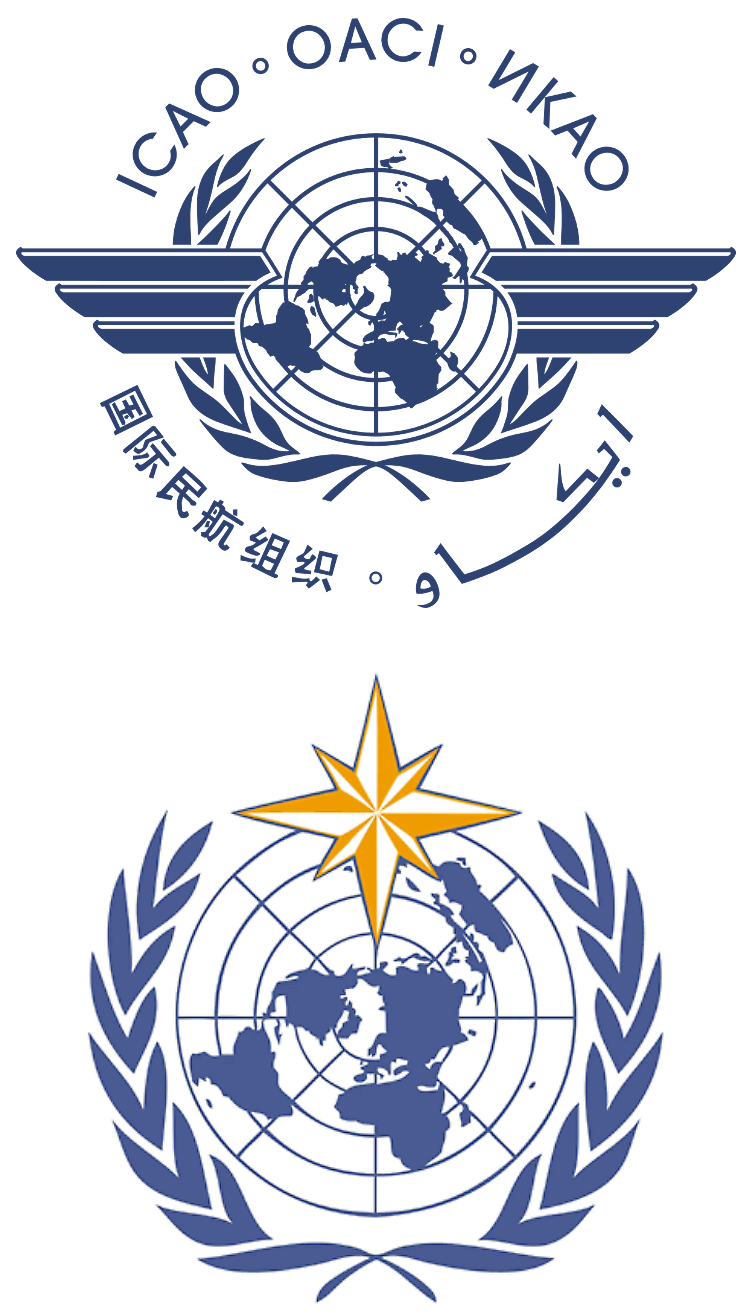 In support of the working arrangements between the International Civil Aviation Organization (ICAO) and WMO – both specialized agencies of the United Nations – and consistent with the outcomes of a bilateral meeting between the ICAO Secretary General and the WMO Secretary-General, the Secretariat of the two Organizations have sought to establish a ‘Joint Aviation Forum’ (JAF). The purpose of the JAF is to help drive efficiencies and to avoid duplication of effort within and between the two Organizations, including their respective subsidiary bodies addressing aeronautical meteorology, namely the ICAO Meteorology Panel (METP) and the WMO Standing Committee on Services for Aviation (SC-AVI).
In support of the working arrangements between the International Civil Aviation Organization (ICAO) and WMO – both specialized agencies of the United Nations – and consistent with the outcomes of a bilateral meeting between the ICAO Secretary General and the WMO Secretary-General, the Secretariat of the two Organizations have sought to establish a ‘Joint Aviation Forum’ (JAF). The purpose of the JAF is to help drive efficiencies and to avoid duplication of effort within and between the two Organizations, including their respective subsidiary bodies addressing aeronautical meteorology, namely the ICAO Meteorology Panel (METP) and the WMO Standing Committee on Services for Aviation (SC-AVI).
The JAF has recently commenced in a trial mode, with the trial expected to last up to 24 months. Experts from the METP Management Group and SC-AVI, supported by the ICAO Secretariat and WMO Secretariat, intend convening conference calls once or twice a year to discuss matters of common interest or concern and to align respective development and management efforts. An inaugural JAF conference call was held on 13 December 2023 and considered the implications of service delivery transformation within aeronautical meteorology
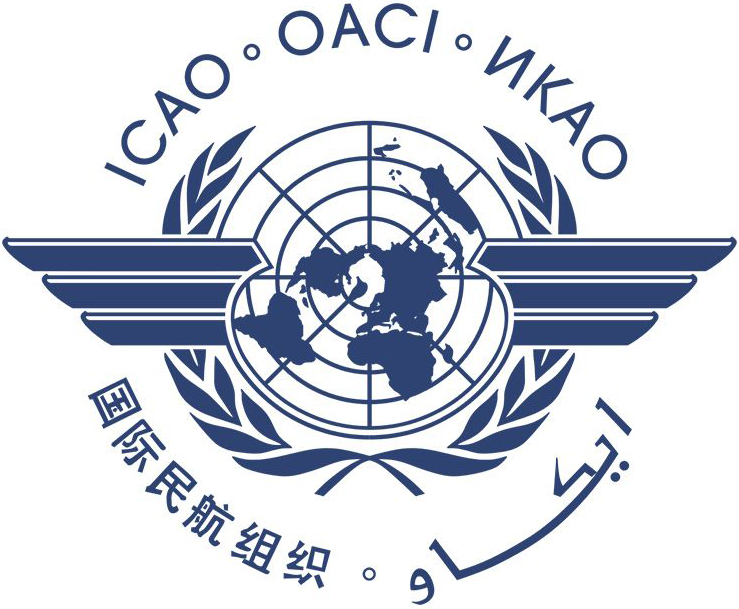 News from the ICAO Secretariat
News from the ICAO Secretariat
Submitted by Jun Ryuzaki, Technical Officer, Meteorology, ICAO
Article will appear here. Please come back soon.
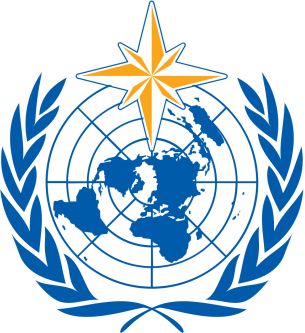 News from the WMO Secretariat
News from the WMO Secretariat
Submitted by Greg Brock, Head, Services for Aviation, WMO
As the foregoing articles illustrate, there has been a tremendous number of meetings and other events taking place over the past 6 months. All these events, among many others, have had input from the WMO Services for Aviation Division (pictured).

Next year, 2024, looks like it will start in the same spirit as 2023 is ending, with any array of meetings and other events already confirmed or under consideration. News on all of these meetings and other events can be found on the Services for Aviation homepage as they arise, especially under 'Related News' and 'Upcoming Meetings'.
In other developments, WMO recently launched a new electronic library to access publications in aeronautical meteorology and other areas. The new WMO e-Library offers a variety of search, filtering and browsing options. Users can also create custom collections, bookmark search results, and receive notifications of new uploads.

Lastly, the WMO Secretariat is closely monitoring the progress within ICAO in respect a proposed amendment to ICAO Annex 3 and, in particular, the impact that a foreseen delay to the adoption and applicability date of new ICAO provisions may have on WMO technical regulations and guidance, including the plan of action for the discontinuation of WMO-No. 49, Volume II mentioned in the article above.
Upcoming WMO meetings and events
Note: All information given here is subject to change.
- SERCOM-3, 4 to 9 March 2024, Bali, Indonesia, including a Gender Action Day on 7 March 2024 [link]
- INFCOM-3, 15-19 April 2024, Geneva, Switzerland [link]
- ET-WCS-1, 16-18 April 2024, Geneva, Switzerland
- EC-78, 10-14 June 2024, Geneva, Switzerland
Coming up next time...
In the next issue of the newsletter readers can look forward to:
- Outcomes of SERCOM-3 (including Gender Action Day) and INFCOM-3
- Outcomes of ET-WCS-1
- Highlights of EC-78
- Arrangements for an Aeronautical Meteorology Scientific Conference 2024
...and more!
CLICK HERE to read previous newsletters
CLICK HERE to return to our homepage
